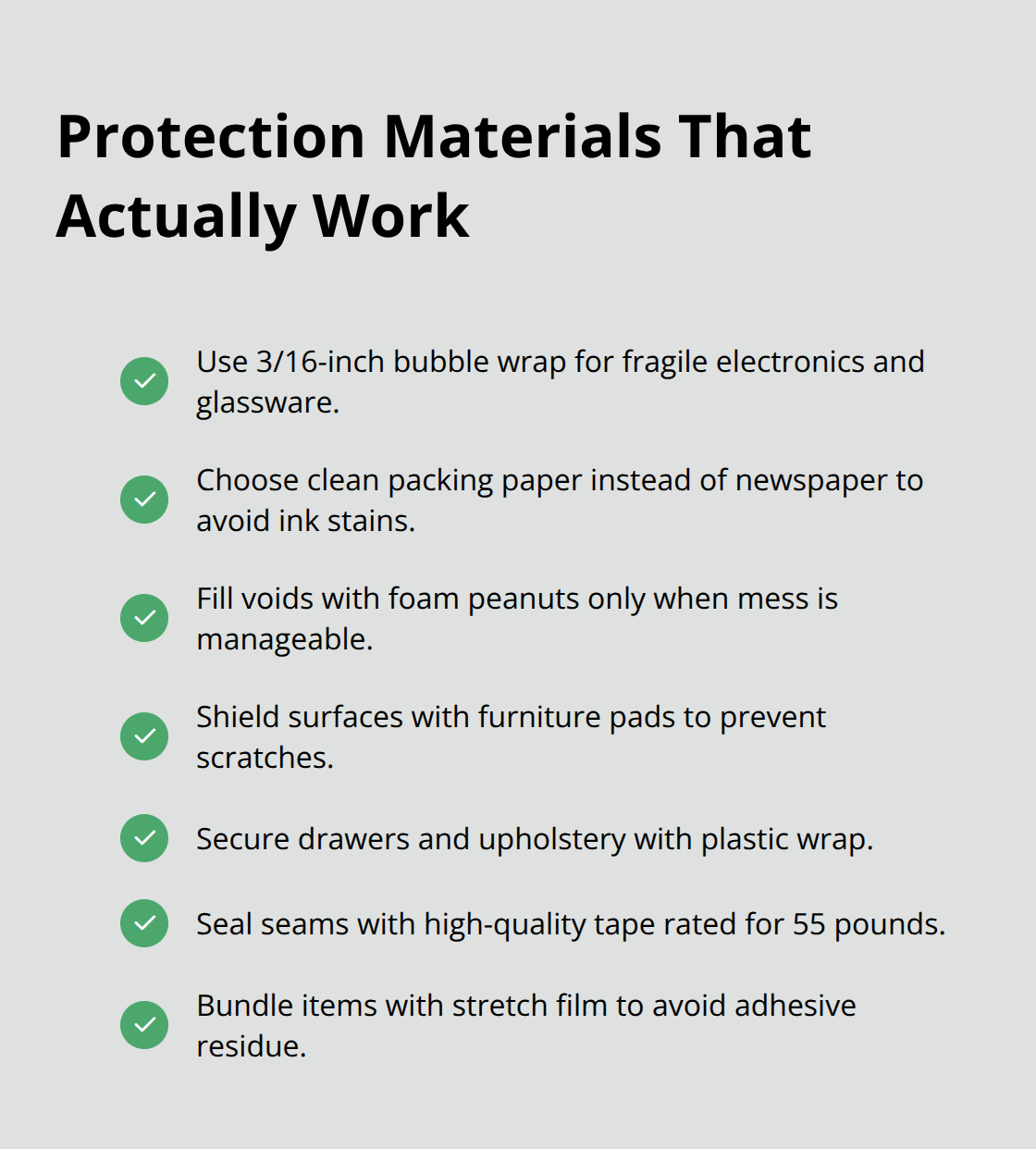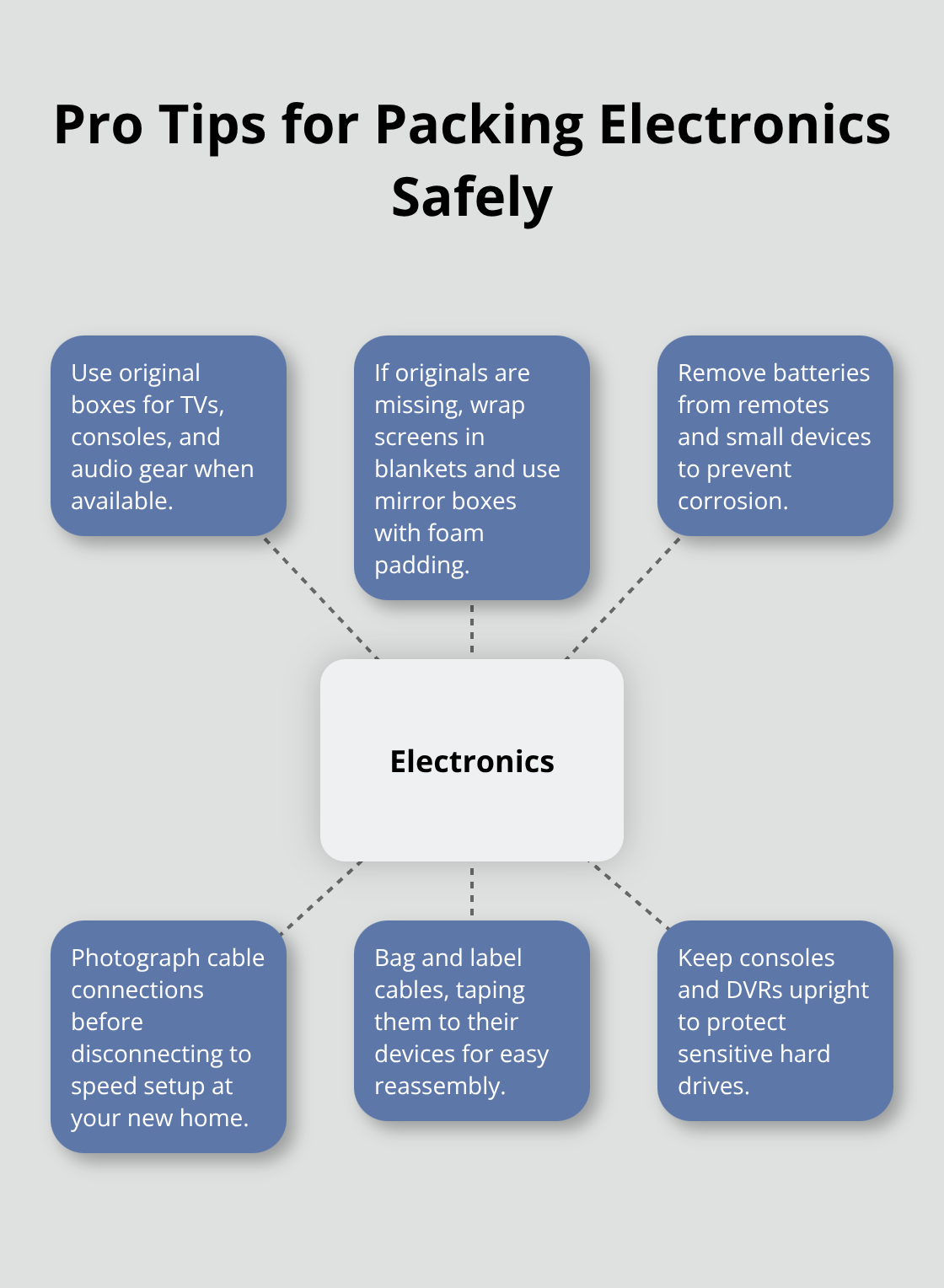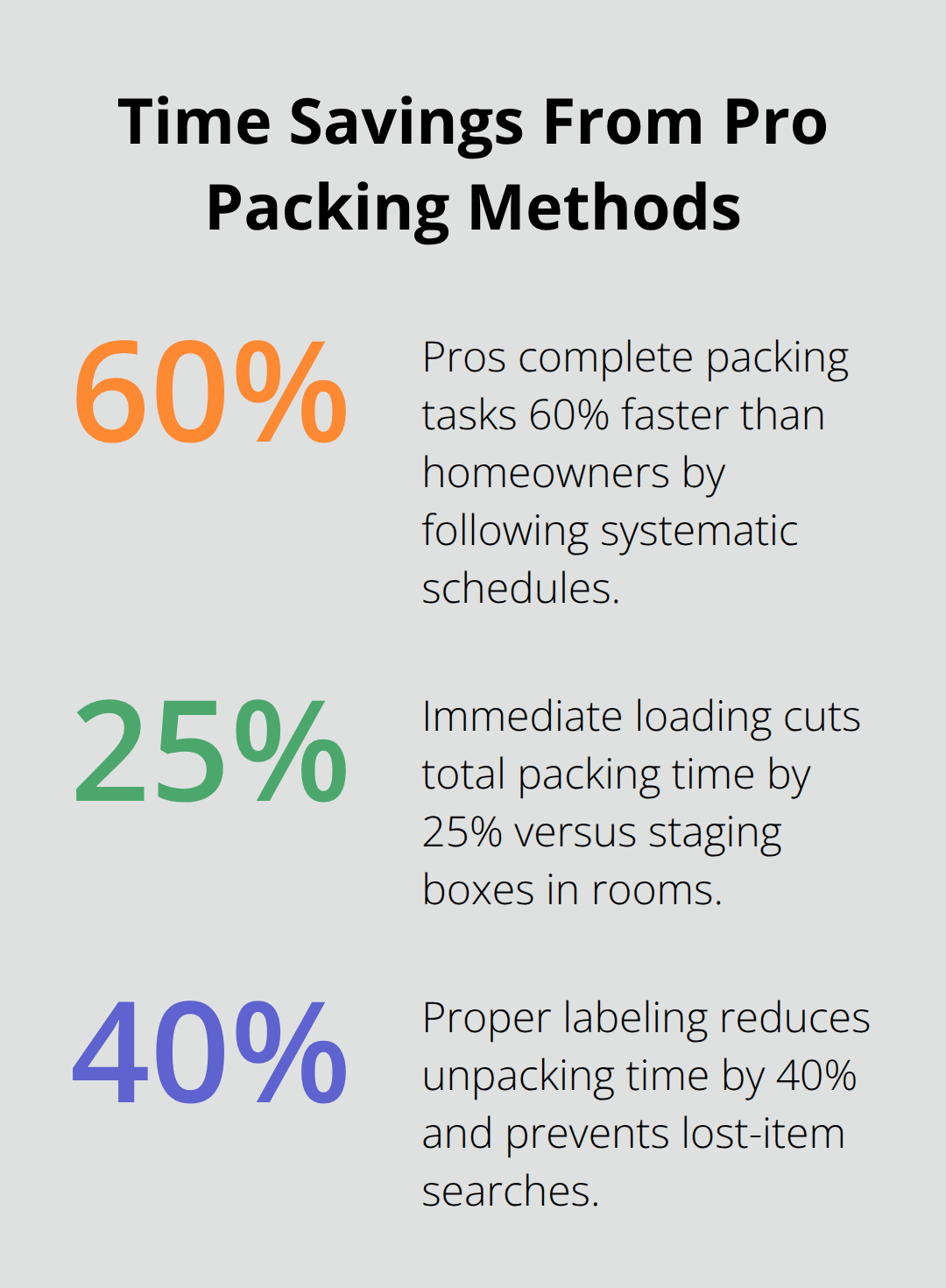Moving house ranks among life’s most stressful events, but smart packing strategies can transform chaos into order. The right approach saves both time and money while protecting your belongings.
We at Southbay Moving Systems have seen countless moves go smoothly when homeowners follow proven packing tips for moving house. Professional techniques make all the difference between a nightmare move and a seamless transition.
What Packing Supplies Do You Actually Need
Professional movers stock specific supplies that amateur packers often overlook, which leads to damaged belongings and wasted time. Improper packing and rough handling commonly cause fragile glassware and delicate china to suffer cracks, chips, and shattered pieces. Smart supply selection prevents these costly mistakes.
The Right Boxes Make All the Difference
Small boxes that weigh 30 pounds maximum work best for books, canned goods, and dense items. Medium boxes handle kitchen appliances and linens perfectly. Large boxes should only contain lightweight bulky items like pillows and lampshades.
Wardrobe boxes with metal bars keep clothes wrinkle-free and save repacking time. Dish packs with cardboard dividers protect glassware better than newspaper stuffing. Mirror boxes with foam padding handle artwork and flat screens safely. Specialty boxes provide superior protection compared to standard moving boxes.
Protection Materials That Actually Work
Bubble wrap with 3/16-inch bubbles provides optimal cushioning for electronics and fragile items. Packing paper works better than newspaper because it won’t stain your belongings with ink. Foam peanuts fill empty spaces but create mess during unpacking.
Furniture pads prevent scratches on wood surfaces and appliances during transport. Plastic wrap secures drawers and protects upholstered furniture from dirt. High-quality packing tape (rated for 55 pounds) holds boxes together under stress. Stretch film keeps multiple items bundled without adhesive residue.

Smart Labels Save Hours Later
Number each box and maintain a master inventory list on your smartphone. Color-coded labels speed room identification at your new home. The red tape method marks fragile items clearly for careful handling.
Room destination labels on three sides prevent confusion during unloading. QR code labels linked to detailed inventory apps track contents precisely. Professional companies report that proper labels reduce unpacking time by 40% and eliminate lost item searches.
These supplies form the foundation of efficient packing, but success depends on how you apply them room by room throughout your home.
Which Rooms Need Special Packing Attention
Kitchen items demand the most time and care since dishware represents a significant portion of moving damages. Wrap each plate individually in paper, then stack five plates maximum per bundle with paper between each piece. Pack plates vertically like records in dish pack boxes with cardboard dividers. Glasses need double wraps with paper inside the glass and around the outside, then nestle them in divided boxes. Stack pots and pans inside each other with paper padding, while small appliances go in original boxes when possible or medium boxes with heavy cushioning. Pack spices and pantry items in sealed plastic bags inside boxes to prevent spills that damage other belongings. Sharp knives require individual cardboard sheaths and should pack in clearly marked boxes away from other items.
Electronics Require Professional Treatment
Living room electronics represent thousands of dollars in value but pack easily with proper technique. Original boxes provide perfect protection for televisions, systems, and sound equipment. Without original boxes, wrap screens in blankets and pack in mirror boxes with foam padding. Remove batteries from remotes and small devices to prevent corrosion damage. Photograph cable connections before you disconnect anything to speed setup at your new home. Pack cables in labeled bags and tape them to their devices. Consoles and DVR boxes contain sensitive hard drives that need gentle treatment and should travel upright when possible.

Bedroom Items Pack Fast With Smart Methods
Clothing packs fastest when you leave items in dresser drawers and secure drawers with plastic wrap. Wardrobe boxes handle clothes without folding and prevent wrinkles completely. Pack shoes in their original boxes or wrap them individually to prevent scuffs on other items. Jewelry travels safest in original boxes or small containers with compartments to prevent tangles. Mattresses need protective plastic covers to guard against dust and moisture during transport. Linens and pillows compress well in vacuum storage bags which can reduce volume by up to 80% and saves truck space.
These room-by-room packing strategies form the foundation of efficient packing, but timing and technique determine whether your move stays on schedule or falls behind.
How Can Smart Timing Transform Your Packing Process
Professional movers complete packing tasks 60% faster than homeowners because they follow systematic schedules that eliminate last-minute chaos. Start your packing process eight weeks before moving day to handle unexpected challenges without stress. Break down packing into weekly goals with specific room targets and daily box quotas to maintain steady progress.
Pack Off-Season Items Six Weeks Early
Holiday decorations, winter coats in summer, and seasonal sports equipment should fill your first boxes since you won’t need these items during the move. Storage areas like attics, basements, and garage shelves contain items that pack easily without disruption to daily life. Books you’ve already read, artwork not currently displayed, and spare linens pack quickly and create immediate visible progress.
Pack one closet per day and start with guest bedrooms, then work toward frequently used spaces. This approach builds momentum while it keeps essential items accessible until the final week.
Professional Speed Techniques Save Hours
Grouping similar items together by function rather than packing room by room reduces trips between spaces and speeds the process significantly. Pack all picture frames together regardless of their original rooms, then distribute them to appropriate destination rooms during unpacking (this saves multiple trips back and forth).
Load boxes immediately after you pack them rather than stage them in rooms where they create obstacles and confusion. Professional packers report that immediate loading reduces overall packing time by 25% compared to the pack-then-stage approach most homeowners use.

Fill Every Box Completely
Use soft items like towels and clothing as natural padding to eliminate wasted space and reduce total box count. Heavy items like books go in small boxes (30 pounds maximum), while lightweight bulky items fill large boxes completely. This technique prevents box collapse and maximizes truck space efficiency during transport.
Final Thoughts
These packing tips for moving house transform overwhelming tasks into manageable steps that protect your belongings and save time. Start eight weeks early with off-season items, use proper supplies for each room type, and pack systematically to avoid last-minute stress. Professional services become worthwhile when you own valuable artwork, extensive china collections, or lack time for proper preparation.
Three days before your move, pack a survival kit with medications, phone chargers, and essential documents that travel with you personally. Confirm utility connections at your new home and verify truck permits to prevent delays. Take photos of valuable items and electronics before you pack them (this helps with insurance documentation).
We at Southbay Moving Systems handle complex moves with specialized techniques that prevent damage during transport. The week before your move, finish all non-essential rooms and prepare supplies for your old home. Professional movers work faster when boxes are ready and pathways stay clear of obstacles.




